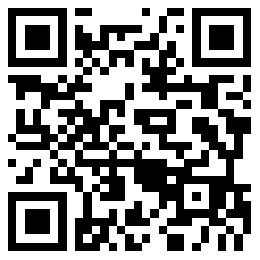社交媒體能讓《華盛頓郵報(bào)》返老還童嗎?
|
4)貨幣化——讓廣告更好: ????在Facebook發(fā)展早期,,由于拒絕賺錢,,一門心思地專注于用戶數(shù)量的增長,馬克?扎克伯格獲得了不少惡評,。但當(dāng)兌現(xiàn)的那一刻來臨時(shí),,他轉(zhuǎn)向了一個(gè)久經(jīng)考驗(yàn)的獲利方式:廣告。現(xiàn)在,,廣告占據(jù)Facebook公司88%的收入,,僅上季度的廣告收入就高達(dá)16億美元。 ????具有諷刺意味的是,,向廣告商出售用戶的眼球正是報(bào)紙一直都在做的事情,。媒體的經(jīng)營模式始終非常簡單:向讀者免費(fèi)(或接近免費(fèi))提供引人入勝的內(nèi)容,然后把廣告置于文章旁邊,,向相關(guān)公司收費(fèi),。你提供的內(nèi)容越好,就將獲得更多用戶,。你獲得的用戶越多,,你就將賺取越多的廣告收入。沒錯(cuò),,這不是研究火箭,,就這么簡單。 ????但Facebook和其他社交網(wǎng)絡(luò)已經(jīng)采取了這種簡單的方式,,而且還把它提升到了一個(gè)新層次,。出現(xiàn)在用戶Facebook主頁側(cè)欄的那些廣告都是根據(jù)用戶每天主動(dòng)向這家網(wǎng)站提交的個(gè)人信息定向發(fā)送的,具有極其精確的針對性,。與此同時(shí),,一種新型的原生廣告,即“付費(fèi)評論”和“推廣消息”(它們看起來非常像是朋友發(fā)布的普通留言),正在越來越多地涌入新聞流之中,。雖然原生廣告看起來像是在玩弄伎倆,,但事實(shí)證明,這類廣告的有效性是傳統(tǒng)橫幅廣告的15倍,。 ????我的觀點(diǎn)是,,于報(bào)紙而言,發(fā)揮自己的實(shí)力,,加大廣告力度或許是更好的生存之道,。不是聚焦于收費(fèi)墻和其他疏遠(yuǎn)用戶的付費(fèi)模式,報(bào)紙應(yīng)該向讀者投放更具針對性的廣告,,同時(shí)嘗試新模式,,比如原生廣告和前置式貼片廣告。廣告收入減少并不是一個(gè)容易解決的問題——在過去十年的大部分時(shí)間里,,業(yè)界精英一直在苦苦思索這個(gè)問題。但我猜測,,貝佐斯或許藏有一兩個(gè)錦囊妙計(jì),。 5)用戶體驗(yàn)——擁抱數(shù)字化,不要抗拒: ????易用性一直是社交媒體革命的基石,。Facebook不脛而走的部分原因是,,無論是小孩子還是老奶奶,任何人都能夠幾乎不費(fèi)任何周折地登錄這家社交網(wǎng)站,,開設(shè)一個(gè)賬戶,,然后開始與朋友建立聯(lián)系。從緩緩滲入的新聞推送,,到無休無止的共享照片,、YouTube視頻,再到各種游戲,,這家網(wǎng)站的一切設(shè)計(jì)都是為了讓用戶流連忘返,。有力證據(jù)是:美國人現(xiàn)在每個(gè)月平均在Facebook上花費(fèi)6.75個(gè)小時(shí)。 ????相比之下,,很多報(bào)紙官網(wǎng)看起來非常像是發(fā)布于網(wǎng)絡(luò)的報(bào)紙印刷版(《華盛頓郵報(bào)》碰巧就是其中最差勁的一員),。用技術(shù)行話來說,這就是所謂的“擬物化設(shè)計(jì)”——在沒有明確原因的情況下,,新技術(shù)模仿舊的設(shè)計(jì)概念,。它的結(jié)果是,許多新聞網(wǎng)站的界面笨重而雜亂,,似乎是在匆匆忙忙地把一切東西置于網(wǎng)頁的“醒目位置”,。在線呈現(xiàn),已經(jīng)開辟了無數(shù)展示信息和吸引讀者的新方式,但迄今為止,,傳統(tǒng)的新聞網(wǎng)站在接納這些變化方面一直表現(xiàn)得非常遲緩,,這一點(diǎn)的確令人尷尬。甚至它們的iPad應(yīng)用有時(shí)候看起來似乎跟“迷你”報(bào)紙沒什么差別,。 ????但也有例外,。《紐約時(shí)報(bào)》就是一個(gè)正在向正確方向邁進(jìn)的新聞網(wǎng)站,。過去一年中,,這家網(wǎng)站發(fā)布的交互式圖形使得讀者可以探索颶風(fēng)桑迪(Hurricane Sandy)的破壞路徑,瀏覽與敘利亞沖突相關(guān),、帶有注解的YouTube片段,,推測美國總統(tǒng)大選的可能結(jié)果。所有這些項(xiàng)目都需要大量的后臺(tái)工作,,但它們充分表現(xiàn)出一家新聞網(wǎng)站能夠提供的附加值,,代表著一種可以吸引讀者,并且讓他們參與進(jìn)來的新聞種類,。 ????此外,,新聞網(wǎng)站也可以從Tumblr、Flipboard和Feedly這類應(yīng)用和服務(wù)中汲取一些設(shè)計(jì)靈感,。所有這些努力將以視覺格式呈現(xiàn)極具吸引力的故事,,被組織成流暢信息流的文章也將讓讀者產(chǎn)生瀏覽和探索的沖動(dòng)。在已經(jīng)非常有效地采用這種模式的新聞網(wǎng)站中,,做得最好的是科技博客Gizmodo,。 |
4) Monetization -- Make ads better: ????Early in Facebook's trajectory, Mark Zuckerberg was notorious for his refusal to monetize and his head-down focus on user growth. But when the moment did come to cash in, he turned to a time-honored approach: advertising. Ads now account for 88% of Facebook's revenue, or $1.6 billion last quarter alone. ????The irony here is that selling users' eyeballs to advertisers is something that newspapers have done forever. The formula has always been fairly simple: Give readers engaging content for nothing (or next to nothing); then charge companies to put their ads next to articles. The better the content you offer, the more users you'll get. The more users you get, the more ad revenue you make. It's not rocket science. ????But Facebook and other social networks have taken this simple approach and elevated it to a new level. Those ads on the sidebar of your Facebook page are precision-targeted, based on the wealth of demographic information you volunteer to the site everyday. Meanwhile, a new breed of native ads -- those "Sponsored Posts" and "Promoted Tweets" that look a lot like ordinary updates from friends - are popping up in news streams more and more. While they may seem gimmicky, native ads have shown to be up to 15 times as effective as traditional banner advertising. ????My point is that newspapers might be well served by playing to their strength and doubling down on advertising. Rather than fixating on paywalls and pay-to-play models that alienate users, they should work to better target ads to readers and experiment with new models, from native ads to pre-rolls. The problem of dwindling ad revenue is not an easy one -- It has kept some of the best business minds busy for much of the last decade. But here's guessing that Bezos might have a new trick or two up his sleeve. 5) User experience -- Embrace digital, don't fight it: ????Usability has been a cornerstone of the social media revolution. Facebook spread like wildfire partly because anyone -- from tween to grandmother -- can log in, open an account, and start connecting with friends, all with a minimum of fuss. Everything about the site is engineered to get people to stick around, from the percolating newsfeed to the endless shared photos and YouTube videos to the games. Proof: The average American now spends 6.75 hours every month on the site. ????By contrast, lots of newspaper sites look an awful lot like printed papers posted online. (TheWashington Post happens to be among the worst offenders.) In tech speak this is known as skeuomorphism, when new technology apes old design concepts for no clear reason. The result on many news sites is an interface that's clunky and cluttered, busily trying to cram everything "above the fold." Online presentation has opened up countless new ways to showcase information and engage readers, but traditional news sites have thus far been embarrassingly slow to embrace these changes. Even their iPad apps sometimes seem little more than "mini" papers. ????There are exceptions, however. One news site taking steps in the right direction is the New York Times. Over the last year, interactive graphics have allowed readers to explore the path of Hurricane Sandy's destruction, browse through annotated YouTube footage of the conflict in Syria and map out possible outcomes of the U.S. presidential election. All of these projects required lots of back-end work, but they show the added value that a news site can offer and represent the kind of content that will draw readers in and keep them engaged. ????News sites might also do well to take a few design cues from apps and services like Tumblr, Flipboard, and Feedly. All of these present stories in highly engaging, visual formats, with articles organized into fluidly scrolling streams that invite browsing and exploration. Among the news sites that have embraced this formula most effectively is gadget site Gizmodo.. |
-
熱讀文章
-
熱門視頻











